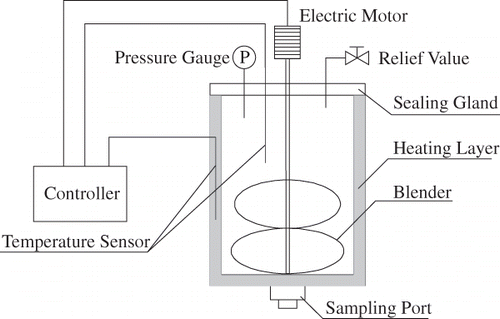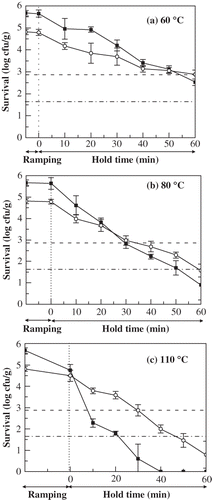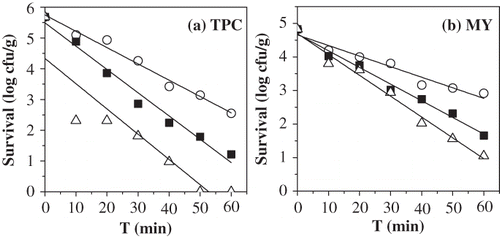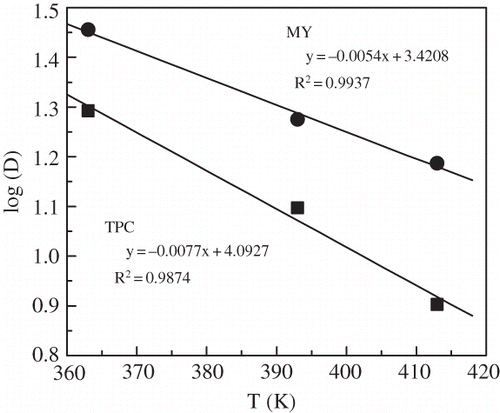Figures & data
Table 1. Physicochemistry properties of food waste samples (wt. %)
Figure 1. Schematic diagram of the inactivation apparatus used for the hydrothermal treatment process.

Table 2. Concentrations of indicator microorganisms in the raw food waste (based on wet weight)
Figure 2. Survivor curves for indigenous microbial indicators in food waste were determined by various thermal (60, 80, and 110 °C) conditions. The dotted vertical line indicates the ramping time. The dash horizontal line means at least 3 decimal reductions of TPC, whereas the dash dot horizontal line shows the 3 decimal reductions of MY. (▪) TPC; (○) molds and yeast.

Table 3. Typical experimental conditions and logarithmic reduction of indigenous microorganisms during ramping time of the hydrothermal processing
Table 4. Microbiological specifications for hygienic safety of animal feed
Figure 3. Plot of logarithmic survival for indigenous bacteria in food waste subjected to various thermal conditions. (○) 60 °C, (▪) 80 °C, and (Δ) 110 °C.

